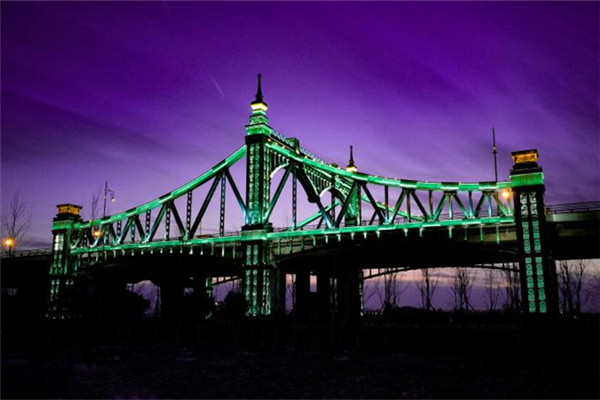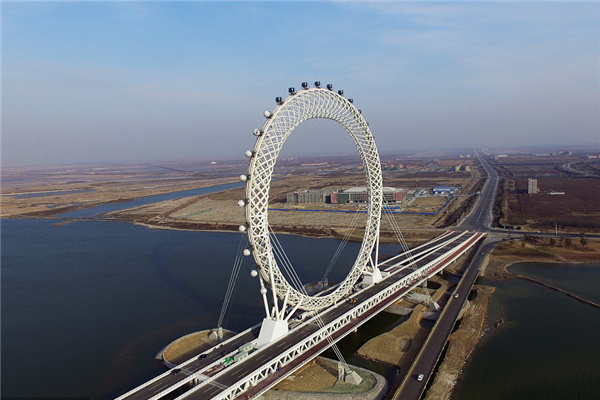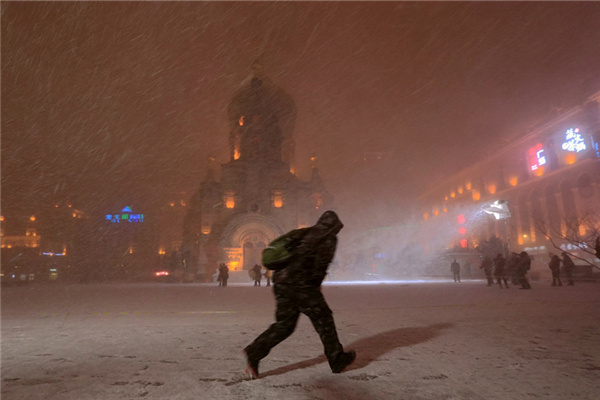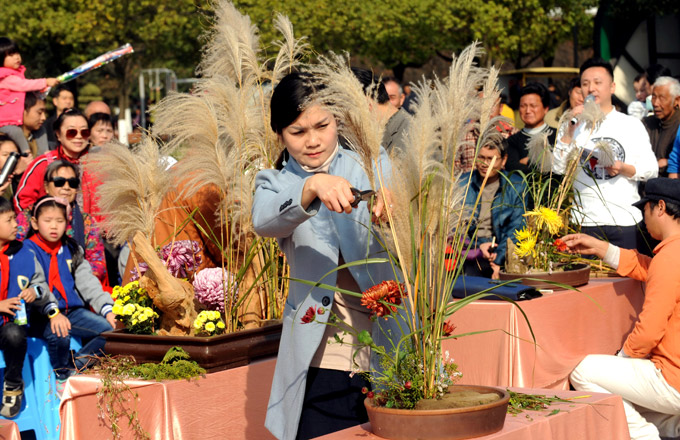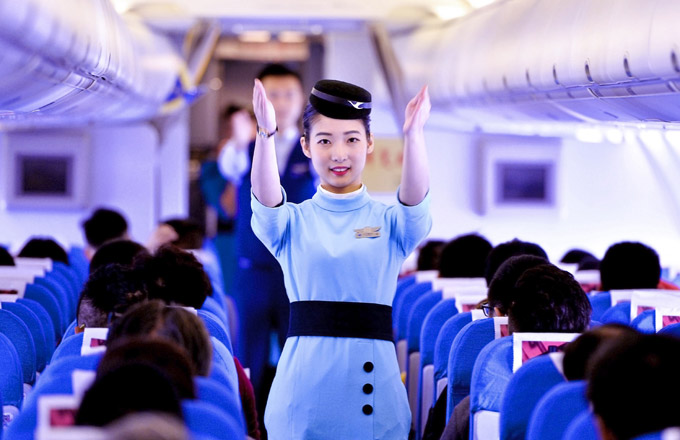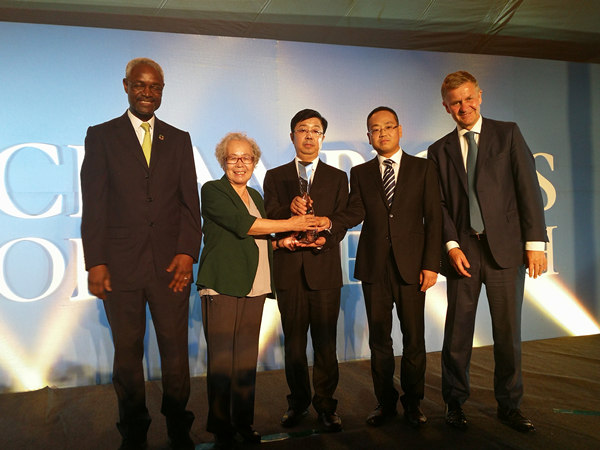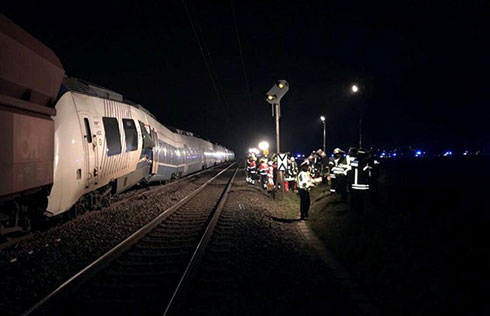

|
Snow Beer, manufactured by China Resources Snow Breweries (China) Limited, is stacked in a supermarket in Yichang of Central China's Hubei province. Asianewsphoto |
Does the historical architecture of China have some kind of relation to the beer derived from the West?
"Sure" is the answer given by China Resources Snow Breweries (China) Limited, manufacturer of the Snow branded beer, and the School of Architecture of Tsinghua University. The two partners are working on a 5-year, 10-million-yuan project to promote and popularize knowledge and appreciation of traditional Chinese architecture.
Snow is the world's largest beer brand by sales last year, according to Plato Logic, a UK-based global beer and beverage market research firm. Tsinghua's School of Architecture is recognized by experts as the leading architecture education and research institute in China.
The project, sponsored by Snow Breweries since last year, invites senior Chinese historical architects from the school to write articles about the history of Chinese architecture in a simple and interesting way, with professional research and historical perspective. A total of five book series will be published within five years and English versions of the books are also planned.
The first series - the Historical Architecture of Beijing - was published in mid-May, and includes five books: "Beijing Quadrangle", "The Forbidden City", "Temple of Heaven", "Summer Palace" and "Map of Beijing".
China Resources Snow Breweries (China) Limited gave the series to architecture-related universities and research institutions in Beijing at the book release ceremony and said another 5,000 sets of the books are to be donated to libraries as well as professional schools and institutes around the nation.
Wang Qun, general manager of the company, told China Business Weekly that a nationwide photographic contest involving Beijing's historical architecture, sponsored by Snow, will also be held soon.
He said the next series will focus on folk houses and rural dwellings in China, with associated book donations and a photograph competition to follow.
"Our initial intention is doing something for knowledge popularization of Chinese historical architecture and inspiring people to respect and protect the treasure of our country with thousands of years of history," said Wang. "But, when we took action, we found that although there are so many professionals and academic researchers devoted to the work, the financial support to this sector is rather poor so far."
Liu Chang, Tsinghua University professor and author of "The Forbidden City", said the greatest challenge for the writers, all senior professors and academicians, is how to use plain words and simple explanations to let ordinary readers with little knowledge of historical architecture understand academic issues, and even inspire their interest to learn more about the sector.
The architect used photos and drawings to illustrate his stories. Meanwhile, Liu, who has been working in the Forbidden City, China's most magnificent imperial complex, for six years, also used his own experience in the book.
"All of the books should follow this style, keeping sure that laymen like me, without any professional knowledge, can well understand what the senior professionals are saying," says Wang, who majored in finance and worked on the former National Economic Committee of China before entering China Resources in 1994.
He recommended that, for the first series, ordinary readers should go through "Beijing Quadrangle" first, then "The Forbidden City".
"'Summer Palace' and 'Temple of Heaven' might be read last, as specific case studies, and you can bring 'Map of Beijing' along to enjoy the city's historical architecture sites," said Wang.
Chinese element branding
The general manager admitted that sponsorship of the program is somewhat related to the brewer's business, as Snow has decided to build itself as a beer brand with rich Chinese characteristics.
The branding campaign was launched early last year, with the first move being logo revision. The company changed its logo from two simple Chinese characters of Xue Hua to artistic Chinese characteristics, with a piece of snowflake embedded. The new design adopted a string of traditional Chinese elements, involving seals, lattice windows, brushwork, and Peking opera facial make-ups.
"We expect everybody knows that Snow is a Chinese name, and sponsorship of the book series, if successful, will help highlight Snow's Chinese features," said Wang.
He also noted that, when pursuing business interests, Snow would not forget social interests; correspondingly, when fulfilling its social responsibility, the company must also take its business operation into consideration.
A recent survey conducted by China Industrial Information Issuing Center under the National Bureau of Statistics shows that domestic brands surpassed foreign peers in the Chinese market last year. The survey covered more than 80 consumer product industries, such as food, beverage, clothes and electronic products, and ranked the top 10 in each sector. Chinese brands made up 64.39 percent of the top 10 lists in general.
"Chinese consumers turned to their favorite local brands, not only because products and services of the Chinese companies improved but also due to ever-increasing patriotism," said Su Songying, research manager of Ipsos China. Ipsos is a Paris-based international market research and consulting firm.
She added that the emotion was greatly stimulated by the nation's fast social and economic development and, in particular, the national cohesion during a series of natural disasters last year, such as the May 12 Sichuan earthquake and the February snowstorm in southern China.
Wang stressed that the Snow brand was born and grew up in China, and highlighting the Chinese background of the brand will be a consistent strategy in the future, when the brand goes out internationally.
China Resources Snow Breweries (China) Limited, established in 1994, is a joint venture of China Resources Enterprise Limited and SABMiller plc, the world's second-largest brewer.
The company has developed from a single regional brewery to a national leading operator in the industry, with over 60 breweries in 19 provinces across China taking 18 percent of the domestic beer market in 2007.
It has been China's largest brewer by annual output since 2005, and production jumped 4.29 percent year-on-year to hit 7.3 million tons in 2008.
Snow-branded beer also exceeded Bud Light of world No 1 brewer AB-Inbev to become the world best seller last year, with 6.1 billion liters sold, a year-on-year increase of 19.1 percent.
(China Daily 05/25/2009 page10)
